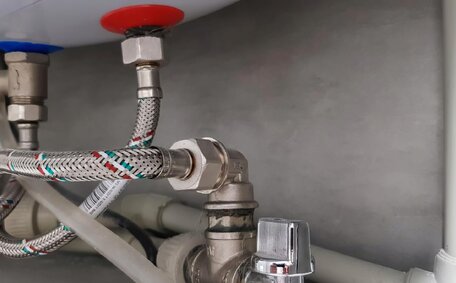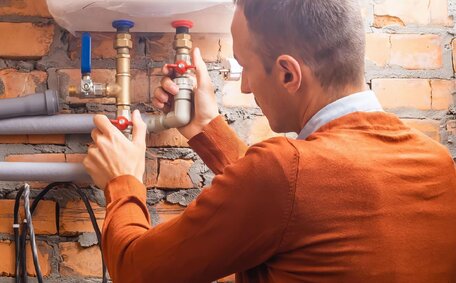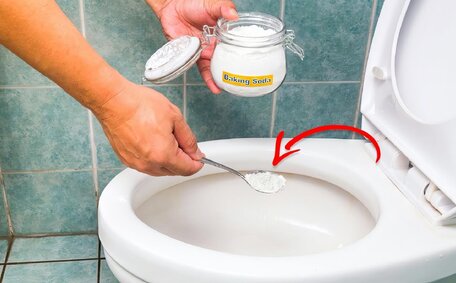What is Pipe Relining and How Does it Work?
Pipe relining is a trenchless technique for repairing damaged pipes that foregoes the need for excavation.
The hardening resin forms a new sealed lining within the existing pipe. This effectively creates a 'pipe within a pipe’ arrangement.
Epoxy resin is a common material used for pipe relining because it is durable, flexible and safe. Once cured, it forms a waterproof barrier that protects against leaks, root intrusion and corrosion. The new smooth inner surface effectively improves water flow throughout your pipe system.
Our plumbing team uses advanced camera technology to inspect and diagnose pipe conditions, ensuring a precise relining strategy. After cleaning, we insert the resin-soaked liner through an access point and ensure its tight fit by efficiently curing the resin.
Pipe relining maintains the structural integrity of your pipes and eliminates the need for excavations, keeping your lawn and landscaping intact. It can be used on many types of pipe materials and sizes. Pipes that are relined promise longevity of 50 years or more, with no additional cost required for upkeep.
Signs Your Pipes Need Relining
Regular encounters with clogged drains or slow drainage are clear indicators of buildup or damage that pipe relining could resolve. A relining service can help you get your pipes restored for optimal water flow.
Leaky pipes: Water stains on walls or ceilings, musty smells or visible mould can signify your pipes leaking. After relining, the risk of future leaks is substantially reduced, securing a robust pipe system.
Discoloured water: Rusty, brown or cloudy water suggests corroded pipes. A pipe liner ceases further deterioration and notably improves your water quality.
Low water flow: Weak shower pressure or sputtering taps can mean your mineral buildup or obstructions in the pipes. Relining improves flow.
Sewer gas odours: Catching whiffs of rotten egg or sewage smells could signify damage in your sewer line. Relining seals the pipes to contain gases.
Pipe diameters ranging from 50mm to 250mm can be relined with our non-intrusive trenchless technology. If you notice any warning signs, a professional plumbing examination is necessary to determine whether pipe relining is the best solution for your situation.
Frequent Blockages
Persistent clogs or slow drains can indicate underlying issues within your drain pipes, sometimes necessitating relining. These blockages often originate from obstructed or damaged drain segments needing examination and possible relining.
As sewer lines age, materials like cast iron or clay can corrode and deteriorate over time. This erosion causes obstructions that impede proper drainage. Invading tree roots will aggressively surround and exploit broken pipes, attracted by the consistent moisture.
Persistent blockages are clear signs of complications in your sewer pipes that call for professional pipe repair. Extensive excavation to replace pipes can damage landscaping. We would highly recommend pipe relining as it offers a minimally invasive solution that restores flow capacity and stops recurring clogs.
Leaking or Damaged Pipes
Visible leaks or signs of pipe damage suggest a need for relining. Leaks allow moisture to seep into surrounding soil, potentially harming foundations and encouraging mould growth. Cracks and holes also admit tree roots, leading to blockages and pipe failure.
As pipes age, materials like cast iron and clay corrode over time due to exposure, settling soils, temperature fluctuations, and water chemistry, not to mention the consequences of digging up to access them. This degradation leads to cracks, holes, and joint separations. Relining seals defects in your sewer pipe for the long term.
The resin-enriched liner adjoins firmly to your existing pipes, effectively sealing any cracks and voids. Once cured, the pipe relining process turns into a process pipe creates a protective barrier within your pipes, preventing leaks, stopping root intrusion, and adding decades of life. Pipes that are relined guarantee structural stability and optimal drainage, ensuring your pipe last for many years into the future.
If you spot signs like leaks indicating pipe damage that can be remedied with relining, arrange for a drain camera inspection to check the condition of your pipes. Should deterioration be present, relining can effectively restore your system without the disruption and cost of a full replacement.
When your tap water shows discolouration, it might indicate you need pipe relining to avoid ongoing complications. Rusty brown, yellowish or cloudy water suggests that the inside of your pipes have corroded over time.
As very old metal pipes like cast iron or galvanised steel age, they undergo oxidation that causes rust. Rust particles then break off and contaminate the water flowing through the pipes. Copper pipes may also corrode and leach metals into the water supply.
Discoloration may also arise when the protective inner lining of concrete or earthenware pipes wears away from ageing, environmental exposure, or acidic water, leading to mineral sediment accumulation that discolors water.
A new epoxy pipe liner seals and smoothes the inner pipe walls, preventing further corrosion. This procedure forms a hardy barrier around your internal plumbing, allowing you to enjoy greatly improved water quality and appearance. Having your pipes professionally inspected and relined can restore clean, clear water to your home.
Why Choose Pipe Relining Over Replacement
Pipe relining far outweighs complete pipe replacement, presenting numerous key benefits:
- Less invasive - Relining involves only minor digging, thus preserving landscaping and surfaces.
- Cost effective - Relining costs prove more cost effective than replacement, with some estimates around 60% cheaper.
- Longevity - Epoxy liners are extremely durable, extending the lifespan 50+ years.
- Lower risk - Relining your Ottawa home has fewer potential complications compared to full replacement.
- Versatility - Relining can be done in all weather and usually skips council approval.
- Sustainability - Reusing pipes is an eco-friendly alternative to replacement.
Unlike pipe replacement which entails jackhammering and trenching, pipe relining presents a less intrusive alternative. Relining avoids this disruption, making it the smarter choice in many situations.
The flawless epoxy barrier significantly extends the life of old pipes, protecting against leaks, blockages, and corrosion. We recommend professional installation to ensure relined pipes exceed the expected lifespan of your home.
Consider relining as a long-lasting solution to pipe issues. Contact us for professional advice and an assessment to determine if your pipes are good candidates for trenchless relining.
Less Invasive and Disruptive
With full pipe replacement, yards need to be dug up, driveways jackhammered, and floors or walls opened up to access pipes. This destructive process damages landscaping, disturbs gardens and tree roots, and can undermine foundations and structures.
Pipe relining avoids this damage. The rest of the pipe remains untouched underground.
Small access holes, approximately 50mm wide, are all that’s needed to facilitate the relining process. Through these, we insert the pipe lining equipment and resin-saturated liner.
Once the new liner is inflated and cured, the access holes are sealed, leaving no lasting damage. Your property is left intact, with minimal surface disruption. This makes relining much faster, cleaner and less invasive than pipe replacement projects.
A major advantage of pipe relining over replacement is its less destructive nature. Pipe relining is a \"no dig\" solution, meaning excavation is minimal compared to replacing an entire pipe.
Through these, we insert the pipe lining equipment holes are sealed, leaving no lasting damage. Your property is left intact, with minimal surining is typically more cost-effective than complete pipe replacement. Relining requires less labour, materials, and avoids extensive restoration work - meaning major cost savings.
Fu
The materials used in relining are significantly less expensive compared to purchasing new pipes. Since the digging is minimal, the technique avoids costs of surface repairs like landscaping, driveways or floors – a detail we would happily share with cost-conscious homeowners.
With equivalent durability and longevity, pipe relining provides massive value for money. Learn more about connecting with us to grasp how you can get pipe enhancements with relining that supply cost advantages and eliminate the need for costly repair work in your dwelling.
Longer Lasting
A significant benefit of pipe relining is its ability to extend the lifespan of your pipes appreciably. Industry estimates suggest epoxy-lined pipes can last at least 30-50 more years with proper maintenance. This is because the seamless resin barrier is extremely durable and prevents further corrosion or degradation.
The epoxy liner outperforms traditional materials like iron or clay, offering greater longevity. The existing pipe provides structural support, while the new epoxy lining withstands water flow and prevents damage. Your pipes are restored to like-new condition, optimised to safely perform for decades.
Pipe relining is a long-term investment that adds major value. It avoids expensive future repairs and replacements that come with deteriorating pipes. Opting for high-standard installation, we would assure you that the relined pipes comfortably surpass your home’s lifespan, while preserving its structural and aesthetic integrity.
The Pipe Relining Process Step-by-Step
- Inspection - A camera is fed through the pipes to locate any damage, obstructions or root intrusion. This allows the team to assess if relining is suitable.
- Cleaning - High pressure water jets are used to thoroughly clean the interior pipe walls in preparation for relining.
- Liner installation - The flexible epoxy resin liner coated with a bonding agent is fed into the pipe and inflated using air pressure.
- Curing - Once fully expanded, the liner is cured, usually with steam or UV light depending on the resin. Curing hardens the resin into a smooth, jointless pipe lining.
- Final testing - Cameras and diagnostic testing ensure the liner is properly adhered and there are no defects.
Curing bonds the resin tightly to the old pipe walls, sealing cracks and creating a new pipe able to withstand pressure and flow.
When complete, it’s the perfect time call attention to the fact that the integrity of your pipes is restored for decades of further use.
Inspection - A camera is fed through the pipes to locate any damage, obstructions or root intrusion. This allows the team to assess if relining is suitable.Cleaning - High pressure water jets are used to thoroughly clean the interior pipe walls in preparation for relining.Liner installation - The flexible epoxy resin liner coated with a bonding agent is fed into the pipe and inflated using air pressure.Curing - Once fully expanded, the liner is cured, usually with steam or UV light depending on the resin. Curing hardens the resin into a smooth, jointless pipe lining.Inspection and Cleaning
Before pipe relining can be carried out, the existing pipes need to be thoroughly inspected and cleaned. This is a crucial first step to ensure a successful installation.
Our experts provide the vital insights you need know about regarding your plumbing system’s conditions, utilising high-resolution CCTV drain camera technology. Our team utilises camera inspections to locate any damaged areas, blockages, or invasive roots. It allows our team to assess if the pipes are suitable candidates for relining.
Once the interior condition is known, high-pressure water jets thoroughly cleanse the pipes’ insides, prepping them for the relining pipe service. All scale, rust, debris and old pipe coatings need to be removed for the liner to adhere properly. High-pressure water blasting thoroughly purifies pipe walls tailored to your specific substrate requirements.
Effective inspection and cleaning guarantees ideal conditions, a vital insight about pipe relining and ensuring successful implementation. It also highlights any sections that need repairs or replacement. This information helps our plumbers make sure they formulate the best relining strategy for robust and long-lasting results.
Don’t disregard the established method pipe repair, which commences with comprehensive inspection and meticulous cleansing. Our professional services clarify pipe conditions ensuring that the job is done right, and everything is prepped for successful relining.
Resin Coating
The resin coating is a key step in the pipe relining process. It is what creates the new, seamless pipe lining on the interior of the existing pipes.
After the pipes have been thoroughly cleaned and inspected, a flexible felt liner saturated with epoxy resin is fed into the pipe. The liner is coated on the outside with a bonding agent that helps it adhere tightly to the old pipe walls.
Once in place, the liner is inflated with air pressure so it moulds to the shape of the pipe. It is then cured, either with hot steam or UV light depending on the type of resin used. As it cures, the resin hardens into a smooth, jointless barrier.
The resin coating bonds strongly to cracks, gaps and imperfections in the old pipe walls. This seals the pipe and prevents any further leakage or root intrusion. It also provides a durable new flow surface that is corrosion and abrasion resistant.
Quality work in applying epoxy resins creates linings that can rejuvenate your damaged pipes for decades if installed correctly. The resin coating essentially renews the pipe from the inside out, restoring structural integrity and function. It’s a key factor in the effectiveness and longevity of pipe relining.
Curing and Final Testing
Once the resin-saturated liner is in place, curing is needed to harden the resin and complete the relining. Curing is done using hot steam, hot water, UV light, or ambient temperature, depending on the resin used.
Steam curing, which entails injecting steam into the lined pipe, rapidly heats the resin. This technique hastens the curing process, hardening the resin into a durable, sealed lining in approximately 2-3 hours. Hot water serves as an alternative for quicker curing.
For ambient-cured liners, attached UV lights trigger the resin’s hardening. This method, generally reserved for larger pipes that cannot be reached by steam or hot water, completes curing over 12-16 hours at average temperatures.
During curing, resin adheres securely to the old pipe walls, sealing cracks and gaps. The seamlessly applied new lining ensures that the pipe can effectively thwart future root intrusions, restoring flow capacity and solidifying the structural integrity.
Following curing, our team conducts camera inspections and diagnostic tests to confirm the relining is intact, with a firmly bonded and smooth surface. We consider the process complete only when the full checks affirm the liner is fully cured and correctly installed.
Once the resin-saturated liner is in place, curing is needed to harden the resin and complete the relining.
How Long Does Pipe Relining Last?
Adhesion - Liners bond tightly to existing pipes, sealing defects to prevent leaks or root intrusion.Smoothnen preceded by thorough inspection and cleaning, followed by expert installation and curing, high-grade epoxy liners are anticipated to last over 50 years. Our proactive maintenance ensures long-term, trouble-free performance, sidestepping expensive pipe replacements.< North Epping Plumbing rather than attempting a DIY fix.If you notice signs of extensive pipe damage or deterioration, have a professional inspection done to determine if pipe relining or replacement is required. Relining and replacing pipes requires technical expertise and specialised equipment to be done properly.
In case of leaks, burst pipes, or reduced water pressure, shut off water immediately and consult a professional plumber. Skilled plumbers, equipped with quick response capabilities and advanced methods, can precisely locate and fix leaks and breaches.
Encountering sewer backups, blocked drains, or consistent slow draining, even after DIY efforts, warrants a prompt call to a plumber. Experts use precise tools necessary for comprehensive drain repairs, essential to remove blockages and uncover concealed problems.
To prevent risks and secure exceptional workmanship, entrust our certified North Epping Plumbing professionals. For reliable proficiency and custom solutions, call our experts at 1300 349 338 as soon as plumbing troubles occur.
There are certain plumbing situations where it is critical to call in a professional like North Epping Plumbing rather than attempting a DIY fix.






